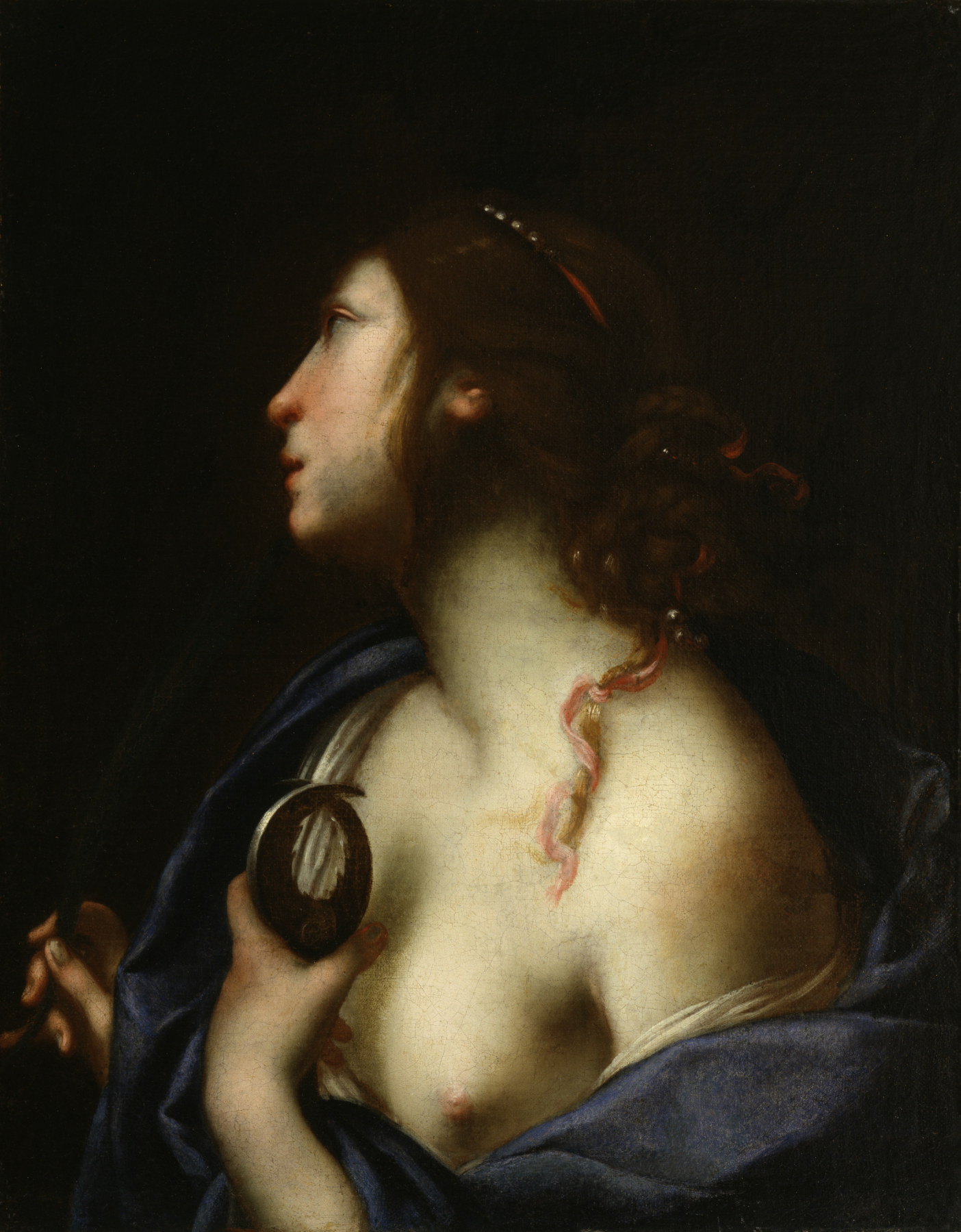St. Agatha
(Renaissance Europe )
The early Christian martyr St. Agatha was pursued by the consular official of Sicily. She refused him, and the tortures to which he submitted her included cutting off her breasts. They were restored though the divine intervention of St. Peter.
This devotional image shows the saint contemplating God while tenderly holding the pincers, the instruments of her sufferings through which she achieved her sanctity. The palm branch is the attribute of martyrs. The way in which the saint is modeled with soft sfumato (an almost invisible rendering of the transitions from light to shade) and emerges from a dark background is characteristic of Furini's work.
For more information on this painting, please see Federico Zeri's 1976 catalogue no. 307, p. 435.
Provenance
Provenance (from the French provenir, 'to come from/forth') is the chronology of the ownership, custody, or location of a historical object. Learn more about provenance at the Walters.
Don Marcello Massarenti Collection, Rome, prior to 1881 [mode of acquisition unknown] [1881 catalogue: no. 59; 1897 catalogue: no. 119]; Henry Walters, Baltimore, 1902, by purchase; Walters Art Museum, 1931, by bequest.
Exhibitions
| 1985-1986 | Saints and Their Symbols. The Walters Art Gallery, Baltimore. |
Geographies
Italy, Florence (Place of Origin)
Measurements
Painted surface H: 25 1/4 x W: 19 13/16 in. (64.2 x 50.3 cm)
Credit Line
Acquired by Henry Walters with the Massarenti Collection, 1902
Location in Museum
Accession Number
In libraries, galleries, museums, and archives, an accession number is a unique identifier assigned to each object in the collection.
In libraries, galleries, museums, and archives, an accession number is a unique identifier assigned to each object in the collection.
37.1839


